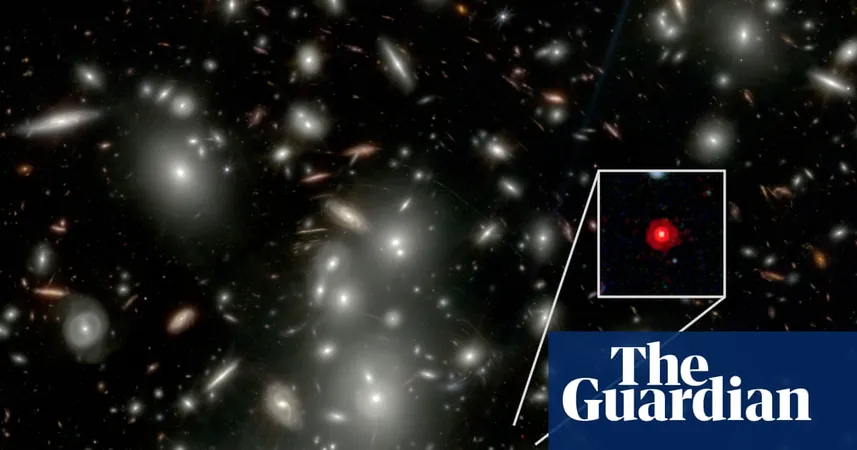
Revolutionary Discovery: An Ancient Black Hole from the Dawn of Time Unearthed!
2025-09-02
Author: Ling
Astronomers have made a groundbreaking discovery with the James Webb Space Telescope, uncovering a nearly naked black hole that could date back to just moments after the Big Bang. This find, if confirmed as a primordial black hole—a type anticipated by the legendary Stephen Hawking—could radically transform our understanding of the universe.
Traditionally, scientists believed that stars and galaxies were the first structures to emerge in the cosmos, with black holes forming later as these early stars collapsed under their own gravity. However, the findings from the JWST reveal a colossal black hole that seems to contradict this widely accepted timeline. Professor Roberto Maiolino from the University of Cambridge, a key contributor to the research, stated, "This black hole is nearly naked... it appears to have formed without the presence of a galaxy. This is incredibly challenging for our current theories."
Primordial black holes are theorized to have formed in the early universe when dense regions collapsed in on themselves, potentially creating a variety of black hole sizes intertwined with the fabric of the cosmos from its very inception. This concept, initially introduced by Hawking in the 1970s, has remained largely hypothetical due to a lack of observational evidence.
The black hole in question, known as QSO1, is a tiny red dot that dates back over 13 billion years, to a time when the universe was only around 700 million years old. QSO1 is one of several such ancient supermassive black holes identified by the JWST, exhibiting characteristics that imply their formation occurred much earlier than previously believed.
Typically, black holes are thought to start small and grow by consuming stars, which raises questions about how these early black holes achieved colossal sizes in such a short period. Despite its tremendous distance, astronomers successfully tracked the orbital speed of gas and dust surrounding QSO1, estimating the mass of the central black hole at an astonishing 50 million solar masses.
In a startling contrast to our local universe, where black holes are about a thousand times smaller than their host galaxies, this ancient black hole appears to have amassed its mass independently. Furthermore, the material surrounding QSO1 has been found to be chemically pristine, containing almost entirely hydrogen and helium—elements leftover from the Big Bang—without the heavier elements produced in stars, further suggesting a lack of star formation in its vicinity.
"These results signal a paradigm shift," added Maiolino. "We are observing a massive black hole that formed without a substantial galaxy, based on the current data." One possible explanation for its existence could be a massive gas cloud collapsing directly into a black hole, but this scenario requires very specific conditions not evident in existing observations, leading scientists to lean towards the primordial black hole theory.
Prof. Andrew Pontzen of the University of Durham, who was not involved in this study, commented on the significance of a confirmed primordial black hole, stating, "It would have profound implications for the fundamental laws of physics. While the researchers strengthen the case for these origins through new JWST observations, it's still an indirect argument. In the next decade, the upcoming generation of gravitational wave detectors will help clarify this debate."
 Brasil (PT)
Brasil (PT)
 Canada (EN)
Canada (EN)
 Chile (ES)
Chile (ES)
 Česko (CS)
Česko (CS)
 대한민국 (KO)
대한민국 (KO)
 España (ES)
España (ES)
 France (FR)
France (FR)
 Hong Kong (EN)
Hong Kong (EN)
 Italia (IT)
Italia (IT)
 日本 (JA)
日本 (JA)
 Magyarország (HU)
Magyarország (HU)
 Norge (NO)
Norge (NO)
 Polska (PL)
Polska (PL)
 Schweiz (DE)
Schweiz (DE)
 Singapore (EN)
Singapore (EN)
 Sverige (SV)
Sverige (SV)
 Suomi (FI)
Suomi (FI)
 Türkiye (TR)
Türkiye (TR)
 الإمارات العربية المتحدة (AR)
الإمارات العربية المتحدة (AR)